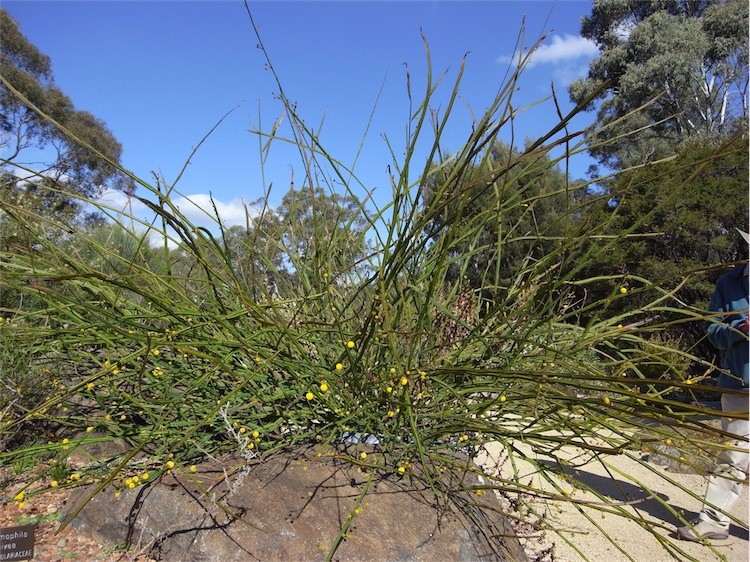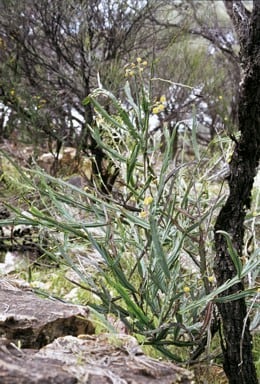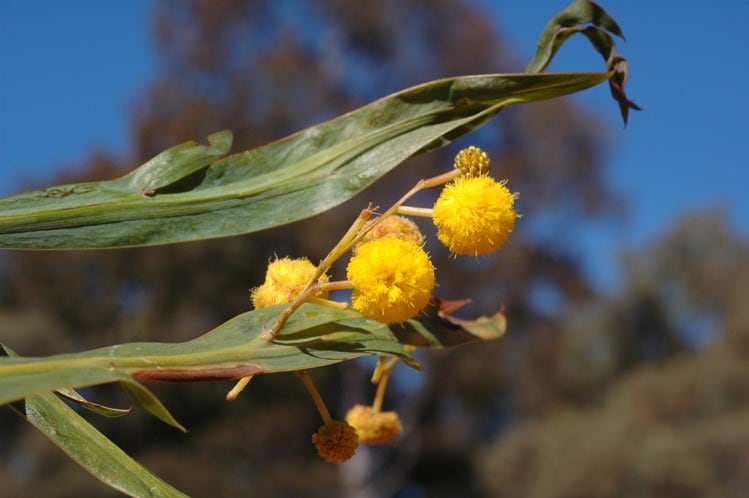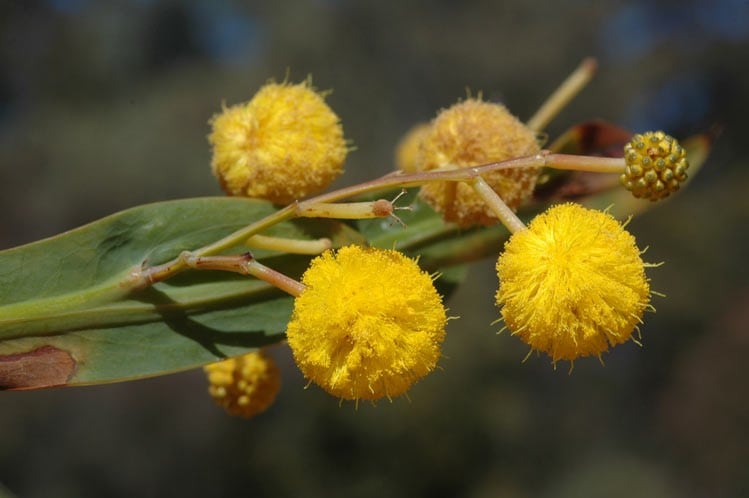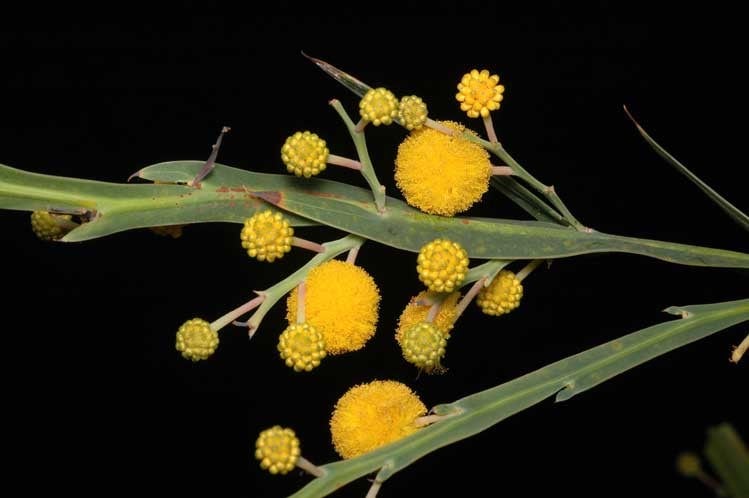Acacia pterocaulon Maslin
WATTLE
Acacias of Australia
Family
Fabaceae
Distribution
Known only from within a range of hills W of Morawa, W.A.
Description
Intricate shrub to 1.3 m high. Branchlets glabrous. Phyllodes continuous with branchlets, bifariously decurrent and forming opposite wings with each one extending to the next below; wings 2-6 mm wide, coriaceous, subglaucous, glabrous, with marginal nerve prominent; free portion of phyllodes erect, lanceolate to narrowly triangular, straight or very shallowly incurved, 1–5.5 cm long, with main nerve central; gland basal. Inflorescences racemose; raceme axes 1–10 cm long, normally narrowly winged at anthesis; peduncles 10–15 (–20) mm long, glabrous; heads globular, 10–15 mm diam. at anthesis (dry), densely 60–70-flowered, golden. Flowers 5-merous; sepals ±free, linear-spathulate. Pods linear, to 12 cm long, 4–5 mm wide, coriaceous-crustaceous, ±pruinose, glabrous. Seeds longitudinal, oblong,
4.5–5 mm long; aril subconical.
Habitat
Grows in rocky (chert) clay loam on slopes of hills, in Eucalyptus woodland or dense casuarina scrub.
Specimens
W.A.: type locality, R.J.Cumming 2194 (MELU, NSW, PERTH).
Notes
Vegetatively resembling the more southerly distributed A. glaucoptera and some forms of A. willdenowiana but readily distinguished by its linear, ± straight pods which are 4–5 mm wide. Additionally, A. glaucoptera is recognised by its much smaller flower-heads, extremely reduced 1-headed racemes (to 0.5 mm long) and densely tomentulose phyllode axils. Acacia willdenowiana is further recognised by its rush-like growth habit, pale yellow to white heads with 13–21 flowers, united sepals and transverse seeds.
FOA Reference
Data derived from Flora of Australia Volumes 11A (2001), 11B (2001) and 12 (1998), products of ABRS, ©Commonwealth of Australia
Author
B.R.Maslin
Minor edits by J.Rogers
This identification key and fact sheets are available as a mobile application:
URL: https://apps.lucidcentral.org/wattle/
© Copyright 2018. All rights reserved.

